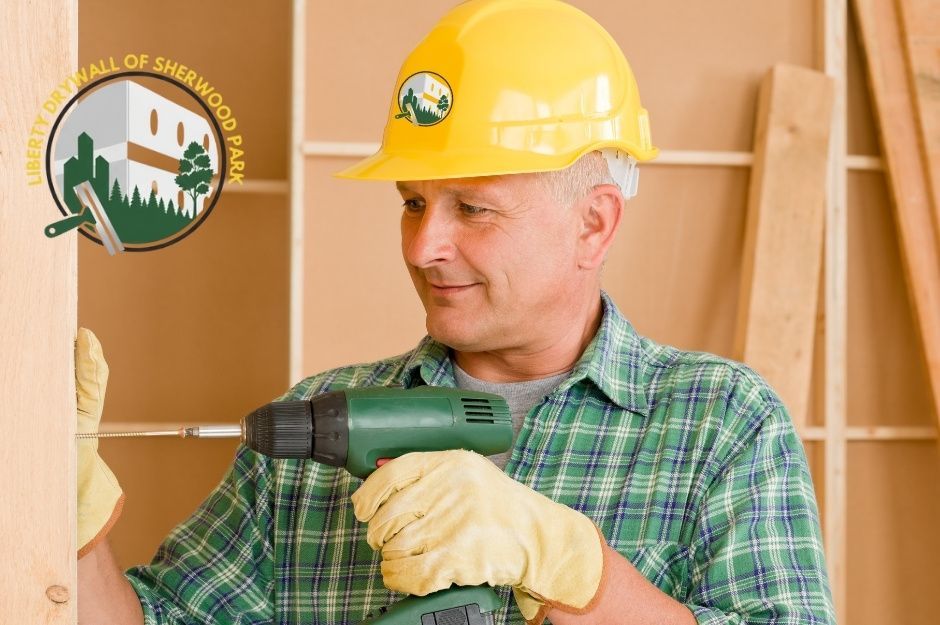Stony Plain Drywall Repair Services
Trustworthy Sheetrock Repair Contractors in Stony Plain, AB

When your walls need professional attention in Stony Plain, Alberta, skilled drywall contractors at Liberty Drywall Sherwood Park stand ready to restore and enhance your space. From minor repairs to complete installations, local experts handle everything from stubborn cracks and unsightly holes to water damage and popcorn ceiling removal.
Located just west of Edmonton in the Edmonton Metropolitan Region, Stony Plain's humid continental climate and temperature extremes—from -40°C winters to 35.7°C summers—create unique challenges for drywall integrity that local contractors understand intimately.
Serving the town's population of approximately 17,993 residents across 35.45 km² and the surrounding Parkland County area, these professionals bring specialized knowledge of local building codes and climate-specific requirements.
Divine Drywall and other trusted contractors in Stony Plain provide comprehensive services including crack repair, hole patching, seam finishing, and complete drywall installation with soundproofing options. Your walls and ceilings receive meticulous attention through precise mudding and taping techniques that ensure a flawless finish.
Professional drywall services can transform damaged or outdated surfaces in your home or office. Local contractors bring years of experience in matching textures, repairing nail pops, fixing water damage, and installing new drywall that meets your specific needs and preferences. Whether you're restoring one of Stony Plain's historic buildings dating back to the town's 1907 incorporation as a village or working on modern construction, experienced contractors understand the unique structural considerations of properties throughout the T7Z postal area.

Liberty Drywall of Sherwood Park (CP)

Comprehensive Drywall Repair Services
Professional drywall repair services in Stony Plain address a wide range of common wall and ceiling issues. Local contractors use specialized tools and techniques to restore damaged drywall surfaces to their original condition. Given Stony Plain's location in NRC Plant Hardiness Zone 4a with extreme temperature fluctuations of over 75°C between record highs and lows, buildings experience significant expansion and contraction that can stress drywall systems.
Crack and Seam Restoration
Wall and ceiling cracks often develop along seams or due to building settlement. In Stony Plain, the freeze-thaw cycles—with average January lows of -15.9°C and July highs of 21.8°C—cause repeated expansion and contraction that frequently leads to seam separation and cracking. Small hairline cracks require careful filling with joint compound and reinforcement with mesh tape to prevent reappearing.
Larger cracks need more extensive repair, including cutting out damaged sections and installing new drywall tape. Your contractor will apply multiple thin coats of compound, sanding between layers for a smooth finish. Contractors serving the Stony Plain area, accessible via Highway 16A, Highway 628, and Highway 779, bring equipment designed to handle repairs in both residential homes and the town's distinctive mural-adorned historic buildings.
Professional seam repair involves removing loose tape, cleaning the joint, and applying new tape with fresh compound. This process ensures invisible seams that maintain structural integrity.
Hole, Dent, and Pop Repair
Small dents and nail pops are fixed by driving protruding nails deeper and filling holes with compound. Contractors typically add a new screw nearby to secure the drywall to the stud.
For medium-sized holes, your repair team will use mesh patches covered with multiple layers of compound. Larger holes require cutting back to studs and installing new drywall sections. With Stony Plain's elevation of 710 meters (2,330 feet) above sea level, atmospheric pressure variations can affect moisture content in drywall, sometimes contributing to fastener pops and surface irregularities.
Common causes like doorknob impacts need reinforcement behind the repair to prevent future damage. Your contractor will match existing wall texture for seamless results.
Water Damage and Mold Remediation
Water-damaged drywall becomes soft and may grow mold. Your contractor will identify and fix the water source before starting repairs. Stony Plain receives an average of 536mm of annual precipitation, with particularly heavy rainfall from June through August (averaging 98-106mm monthly), making water intrusion and humidity-related drywall damage common concerns for property owners.
Affected sections must be cut out beyond the visible damage to ensure all compromised material is removed. Testing for moisture levels helps determine the full extent of necessary repairs. The town's significant snowfall—averaging 133.9cm annually with peak accumulation in January (25.2cm)—can cause ice dam formation and spring melt issues that lead to ceiling and wall water damage.
Installation of new moisture-resistant drywall helps prevent future issues. Special antimicrobial treatments can be applied during repairs to inhibit mold growth.
Popcorn Ceiling and Texture Repair
Damaged popcorn texture requires careful matching of the original pattern. Your contractor will scrape the affected area, repair any underlying damage, and apply new texture. Many of Stony Plain's older properties, dating back to the early 1900s when the town was first established near the original Dog Rump Creek settlement, feature vintage ceiling textures that require specialized matching techniques.
Stucco and knockdown textures need special tools and techniques for proper matching. Small repairs involve feathering new texture into existing patterns.
For water-stained popcorn ceilings, sections may need complete removal and reapplication. Modern texturing tools allow precise matching of depth and pattern for invisible repairs.
Professional Drywall Installation Solutions
Expert drywall installation requires precise techniques, proper materials, and skilled craftsmanship to create smooth, durable walls and ceilings. Professional contractors use specialized tools and methods to ensure your walls meet building codes while providing excellent soundproofing and insulation properties. In Stony Plain's harsh climate—where record low wind chills reach -47.7 and summer humidex values climb to 39.3—proper insulation and air sealing during drywall installation are critical for energy efficiency and comfort.
Drywall Hanging and Placement
Your drywall project starts with accurate measurements and careful planning. Professional contractors select the appropriate drywall thickness based on your specific application - 1/2 inch for walls and 5/8 inch for ceilings and fire-rated areas.
Proper hanging techniques include staggering joints to prevent weak points and using the correct screw spacing of 12-16 inches along studs. This creates a stable foundation for finishing work. Contractors operating in the Edmonton Metropolitan Region understand that the area's clay-rich soil and seasonal ground movement require flexible installation techniques that accommodate structural shifts without cracking.
Your contractor will ensure precise cuts around electrical boxes, windows, and doors using specialized tools like drywall saws and routers. This attention to detail prevents gaps and improves the final appearance.
Soundproofing and Insulation
Sound-dampening drywall installation incorporates specialized materials like sound-deadening board or multiple layers of gypsum board. These techniques can reduce noise transmission between rooms by up to 80%.
Your contractor may recommend resilient channels - metal strips that create an air gap between the drywall and studs. This separation significantly reduces sound transfer through walls. For properties along Highway 16A, which runs through Stony Plain and carries significant traffic between Edmonton and points west, enhanced soundproofing installations help minimize road noise intrusion.
Proper insulation installation before hanging drywall improves both soundproofing and energy efficiency. Contractors carefully fit insulation between studs without compression to maximize effectiveness. With Stony Plain's mean daily temperatures ranging from -11.7°C in January to 16.5°C in July, proper thermal barriers behind drywall can significantly reduce heating costs during the long winter months.
New Construction and Renovation Installations
New construction drywall installation requires coordination with other trades to ensure electrical, plumbing, and HVAC systems are properly installed first. Your contractor will inspect the framing to verify it meets specifications before beginning installation.
Renovation projects often involve matching existing textures and transitioning between old and new surfaces. Professional contractors carefully remove old drywall to minimize damage to surrounding areas. Stony Plain's rich history—from the original homesteaders Alex McNabb and McPherson to Dr. James Hector's geological observations during the Palliser expedition—means many properties have unique architectural features that require careful preservation during renovation work.
Building code compliance is essential in both new construction and renovations. Your contractor will ensure proper fire ratings and moisture resistance in bathrooms, basements, and other required areas. Properties within Stony Plain's 35.45 km² town boundaries must meet Alberta building standards, and experienced local contractors stay current with municipal regulations administered through the Town Council led by Mayor William Choy.
Expert Drywall Finishing and Preparation
Professional drywall finishing requires precise techniques and specialized skills to achieve seamless, smooth walls that are ready for paint or other finishes. Quality preparation and attention to detail during the finishing phase directly impact the final appearance of your walls.
Precision Mudding Techniques
Joint compound application requires careful layering to conceal seams and fasteners effectively. Your first coat should be thin and precise, focusing on filling gaps and covering drywall tape completely. In Stony Plain's low-humidity climate—particularly during winter months when indoor air can become extremely dry—joint compound may require slightly different application techniques and drying times compared to more humid regions.
Apply subsequent coats slightly wider than the previous layer, feathering the edges to blend with the surrounding wall surface. This gradual build-up prevents visible ridges or bumps.
For corners and other challenging areas, use specialized corner tools and flexible knives to ensure even coverage. Each layer must dry completely before applying the next coat.
Skilled Taping and Seaming
Paper tape provides superior strength for flat joints, while mesh tape works best for inside corners. Embed the tape in a thin layer of compound, removing excess to prevent bubbles or wrinkles.
Press tape firmly into the compound using even pressure. Smooth out any air pockets immediately to ensure proper adhesion.
For inside corners, fold tape precisely down the center before application. This creates crisp, clean angles that enhance the professional appearance of your finished walls. Contractors serving Stony Plain and adjacent Spruce Grove bring expertise in creating finishes that complement the town's aesthetic, from traditional textures suitable for historic downtown buildings to modern smooth finishes for new developments.
Surface Smoothing and Preparation
Sand between coats using progressively finer grits of sandpaper to achieve the smoothest possible finish. Start with 120-grit for initial smoothing, then move to 150 or 180-grit for final passes.
Use a bright work light held at an angle to spot imperfections. Mark problem areas with a pencil for targeted fixes.
Clean all surfaces thoroughly after sanding. Remove dust with a damp cloth or vacuum with a fine-dust filter to prepare for painting or texturing.
Test the surface by running your hand across it. A properly finished wall should feel completely smooth without any noticeable ridges or depressions.
Specialized Drywall Removal and Restoration
Professional drywall removal and restoration requires precise techniques to protect surrounding structures and ensure safe handling of damaged materials. Specialized contractors use advanced tools and methods to address structural issues and restore walls to their original condition.
Drywall Removal and Disposal
You'll need proper tools for safe drywall removal, including pry bars, utility knives, and dust containment systems. Professional contractors isolate work areas with plastic sheeting to minimize dust spread throughout your home.
Contractors carefully detach drywall panels from studs and joists to prevent damage to electrical wiring, plumbing, and insulation. They separate recyclable materials from contaminated pieces. With area codes 780, 587, and 825 covering the region, contractors throughout the Edmonton Metropolitan Region can quickly respond to emergency drywall removal needs following water damage or structural issues.
For homes built before 1980, testing for asbestos-containing materials is essential before removal begins. Certified contractors follow strict disposal protocols for contaminated materials. Many of Stony Plain's historic structures—some dating back to the town's 1908 incorporation as a town—require careful assessment for hazardous materials before renovation work begins.
Sagging and Compromised Structure Correction
Identifying the root cause of sagging drywall is crucial. Common issues include water damage, foundation settling, or inadequate support structures. Stony Plain's position in Parkland County, surrounded by agricultural land where the Stoney people historically camped, means some properties are built on soil conditions that can shift seasonally, potentially affecting drywall stability.
Contractors use specialized bracing systems to stabilize compromised ceiling areas while repairs are made. Support beams or additional framing may be installed to prevent future sagging.
Your contractor will assess joists and studs for water damage or structural weakness. Damaged framework must be replaced or reinforced before new drywall installation. The combination of heavy winter snow loads—with January snowfall averaging 25.2cm—and spring moisture can stress ceiling structures, particularly in older buildings throughout the town's census division 11 area.
Metal support channels or resilient channels can be added to strengthen ceiling attachment points and distribute weight more evenly. For residents in the T7Z forward sortation area seeking reliable drywall services, experienced contractors understand how Stony Plain's climate extremes and unique geological features—from the scattered boulders that may have inspired the town's name to the modern-day building challenges—impact every aspect of wall and ceiling systems.

